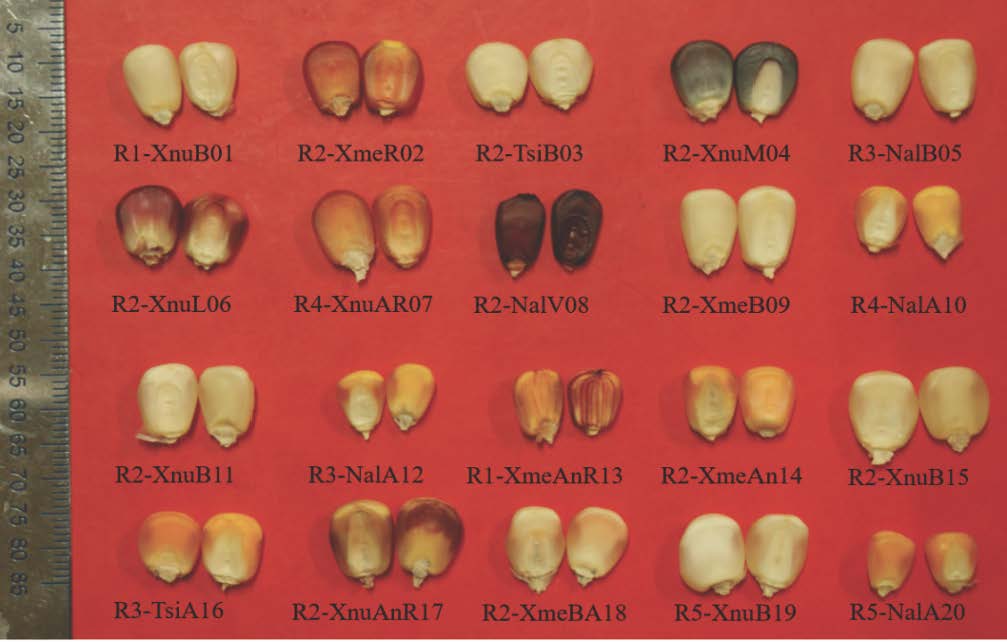Contenido mineral de maíces criollos de Yucatán: análisis mediante µ-Fluorescencia de Rayos X
DOI:
https://doi.org/10.28940/terra.v39i0.454Palabras clave:
calidad nutricional, composición mineral, nutrientes, Zea maysResumen
El maíz (Zea mays L.) en Yucatán es considerado como el principal cultivo en la milpa, seguido de la calabaza, frijol y chile. El maíz está presente en la alimentación básica por su aporte de compuestos activos y minerales esenciales. El objetivo de este trabajo fue la caracterización de diferentes maíces criollos en términos de composición mineral cultivados en diferentes regiones de Yucatán, para la selección de poblaciones de maíz, las cuales podrían tener un uso potencial para la biofortificación y el mejoramiento genético. Se realizó el análisis mineral mediante µ-Fluorescencia de Rayos X (µ-XRF, M4Tornado 100) para la detección de macronutrientes (P, K, S, Ca, Mg y Na) y micronutrientes (Mn, Fe, Zn, Cu y Se) en 20 genotipos de maíces provenientes de cinco regiones en Yucatán (R1: Tixmehuac, R2: Chacsinkín, R3: Peto, R4: Motul y R5: Maní) de las razas Nal t'eel (5), Ts´íit bakal (2), Xmejen-nal (5) y Xnuuk-nal (8). Se realizó un análisis de varianza de los minerales cuantificados, comparación de medias prueba por Tukey y diferencia mínima significativa. Se estableció una dispersión en el contenido total de macronutrientes y micronutrientes en cada genotipo. Con el promedio de los minerales se realizó un análisis de componentes principales (ACP). Los resultados indicaron diferencias significativas (P ≤ 0.05) en el contenido mineral entres los genotipos de maíz. El análisis de dispersión mineral mostró que tres genotipos de la R2 y uno de la R3 sobresalen por su contenido. El análisis de conglomerado delimitó cinco grupos con características distintas por su coloración y región. Las razas Xnuuk-nal y Xmejen-nal cultivadas en R2 presentaron el mayor contenido mineral con la coloración lila, anaranjado-rojo y anaranjado, por lo que podrían ser aprovechados para el mejoramiento genético y biofortificación del maíz.
Descargas
Publication Facts
Reviewer profiles N/D
Author statements
- Academic society
- Terra Latinoamericana

















